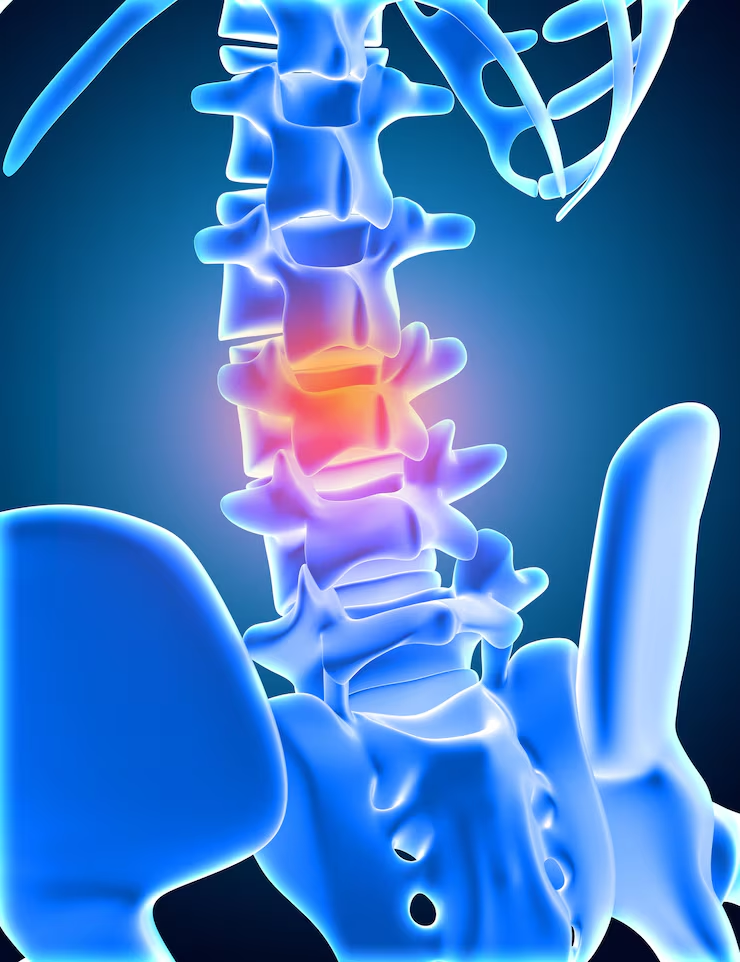Overcoming Pain from Facet Joint Syndrome
Causes, Symptoms, and Treatment of Facet Joint Pain
Our facet joints are movable links between our spinal vertebrae. The facet joints in our spines contain cartilage that allows them to bend and twist, giving us flexibility and allowing for normal body movements. Between each vertebrae there are two joints – one facing upward and the other facing downward. The facet joints are, in a healthy spine, covered with smooth ligaments and fluids allowing the joints to move smoothly over each other.
Facet Joint Pain, also known as Facet Joint Syndrome and Facet Arthropathy, occurs when the facet joints are no longer moving smoothly, either as a result of injury or degeneration. The resulting changes in your spine can shift the weight of your body unevenly on the facet joints and cause loss of mobility and irritation. These joints can also send pain signals to your brain by irritating the medial branch sensory nerves, which can also result in the surrounding muscles stiffening and spasming.
In short, injury and degeneration cause the natural movement of these joints to break down, and the resulting inflammation, nerve irritation, and uneven pressure can cause intense pain and a significant decrease in your quality of life.
Wondering If You Have Facet Joint Pain?
Causes, Symptoms, and Treatment of Facet Joint Pain

What Causes Facet Joint Pain?
Facet Joint Syndrome and pain is caused by Facet Hypertrophy: a degeneration and enlargement of the facet joints. Joint hypertrophy is commonly caused by:
- Aging: Degenerative changes in your facet joints are caused by aging. Eventually, these changes can lead to abnormal stress and strain which becomes painful.
- Pressure Changes: Degeneration of the intervertebral discs in your spine can lead to pressure changes in your spine. As these discs degenerate, they collapse and narrow the space between the vertebrae. This causes bone spurs and abnormal posture, both of which can further complicate your pain.
- Injury: Hypertrophy is most commonly caused by trauma from significant falls, high-impact sports, and motor vehicle accidents.
Symptoms of Facet Joint Syndrome
Facet joint pain can occur gradually, in the case of degeneration, or suddenly, when caused by injury. The most common symptoms of Facet Joint Syndrome are:
- Difficulty twisting and bending the spine: These kinds of movements specifically exasperate the pain, which can make the activities of daily living difficult for you to perform.
- Pain and inflammation: The most commonly affected areas for pain and inflammation are your lower back and neck.
- Numbness, tingling, and muscle weakness: These occur when the edges of one of your facet joints rub on a nerve, which can also be very painful.
- Bone spurs: When your facet joints don’t line up correctly, your bones almost certainly will meet where they shouldn’t and rub against each other. Unsurprisingly, this also becomes very painful.
- Tenderness of certain areas of the spine: Occurs in response to inflammation in the nerves and muscles surrounding your facet joints.
These symptoms affect different parts of your body depending on which spinal nerves have been irritated.
- Neck pain and stiffness, such as might force you to turn your entire body to look at something, may indicate Cervical Facet Joint Syndrome.
- Pain near the middle of your back may indicate Thoracic Facet Joint Syndrome. Joint hypertrophy is less common in the thoracic spine due to the natural rigidity of the vertebrae.
- Low back pain and stiffness, such as might make it difficult to stand up from a chair or straighten your back, may indicate Lumbar Facet Joint Syndrome.
- Spinal stenosis can also occur in these areas, which narrows the spaces within your spine. This puts pressure on the nerves that travel through your spine to the rest of your body.


Conservative Treatments for Facet Joint Pain
Pain from Facet Joint Syndrome can be treated conservatively with postural correction, physical therapy, massage, and chiropractic adjustment. These treatments can reestablish normal motion and increase the strength of the surrounding muscle to help support your spine. Conservative treatments are usually combined with anti-inflammatory medications and possibly muscle relaxers to diminish your acute pain while your body heals.
Most conservative treatments for facet syndrome involve postural correction, soft tissue massage and manipulation of the affected areas.
Physical therapists, osteopathic clinicians and chiropractors are adept at restoring restricted and painful facet joints to move and can reestablish normal motion. Treatments are usually combined with a course of anti-inflammatory medications to decrease inflammation. Muscle relaxers may be used to decrease local muscle spasms.
In some cases the pain may be so severe or the condition so advanced that conservative therapies are either too painful or otherwise ineffective. In these cases a patient may be recommended for interventional pain therapy.
Minimally-Invasive Pain Therapy for Facet Joint Syndrome
If conservative treatments are ineffective or too painful, you may be recommended for one or more minimally-invasive surgical procedures. These procedures can be performed on an out-patient basis, and are done safely using Fluoroscopic X-ray guidance. Interventional pain management therapies can offer rapid pain relief and help you resume normal activity.
Minimally-invasive treatment options may include:
- Facet Joint Injections: This procedure injects a corticosteroid into the affected joint which reduces pain and inflammation. These injections may also be used as part of the diagnostic process for additional treatments.eat facet joint pain, but there is a limit on how frequently they can be administered.
- Facet Joint Block: This procedure is similar to a facet joint injection, but instead injects a local anesthetic into each side of the vertebrae. This will temporarily numb the pain and confirm the source of the injury.
- Radiofrequency Ablation: By destroying (ablating) the nerve endings surrounding the affected facet joint, pain signals can be blocked which will provide you with relief. This procedure often begins with a medial nerve block to confirm the affected nerves for ablation.

Contact Us
If you have questions about how SpineOne can help you get back to life free from the pain of Facet Joint Syndrome, contact one of our schedulers to set up an appointment. Our physicians specialize in conservative and minimally-invasive treatment plans for back, neck, and joint pain. The SpineOne medical center offers same-day appointments to work with your busy schedule, and offers on-site imaging and treatment to offer rapid relief from your ongoing pain.
